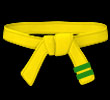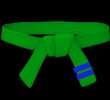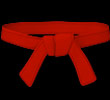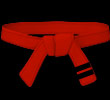Taekwondo 태권도Taekwondo Preschool
When you reach senior belt you are expected to guide the junior belts when they are beginning Taekwondo such as showing by example. To advance from one rank to the next, students typically complete promotion tests in which they demonstrate their proficiency in the various aspects of the art before a panel of judges or their teacher. View Taekwondo belt levels »
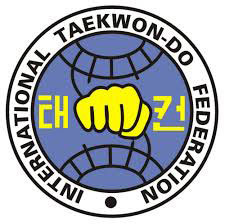
Ahn Changho 안창호
The names of these patterns typically refer either to events in Korean history or to important people in Korean history. Elements of the patterns may also be historical references, such as the number of moves, the diagram, the way the pattern ends, and so on.
Ahn Changho, also written as An Chang-ho (Korean pronunciation: [antɕʰaŋho]; Hangul: 안창호; hanja: 安昌浩, November 9, 1878 - March 10, 1938) was a Korean independence activist and one of the early leaders of the Korean-American immigrant community in the United States. He is also referred to as his pen name Dosan (도산; 島山 [tosʰan]). He established the Shinminhoe (New Korea Society) when he returned to Korea from the US in 1907. It was the most important organization to fight the Japanese occupation of Korea. He established the Young Korean Academy (흥사단; 興士團) in San Francisco in 1913 and was a key member in the founding of the Provisional Government of the Republic of Korea in Shanghai in 1919. Ahn is one of two men believed to have written the lyrics of the Aegukga, the South Korean national anthem. Besides his work for the Independence Movement, Dosan wanted to reform the Korean people's character and the entire social system of Korea. Educational reform and modernizing schools were two key efforts of Dosan. He was the father of Philip Ahn and Susan Ahn Cuddy.
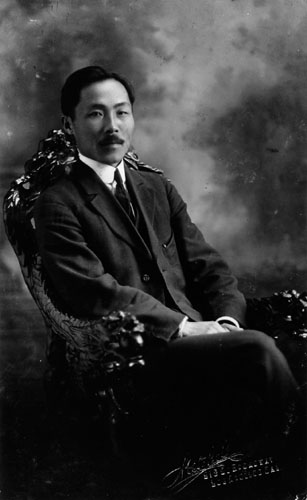
Life: Early Years
Ahn was born as Ahn Ch'i-sam, on the 6th day of the 10th lunar month 1876. (This equates to 10-11-1878 but Dosan used 9 November 1876 in his Visa), Kangso Pyeongan province, in present-day South Pyongan, North Korea. Ahn is the family name, chi is the generation marker, and sam, as he was the third son of Ahn Kyon-jin (father), and Hwang (Mother). Dosan is of the family of the Sunheung Ahn (순흥안씨; 順興安氏) lineage. It is believed that he changed his name to Chang-ho when he began public speaking as a teenager. His father also changed his name from Ahn Kyon-jin to Ahn Heung-guk, (assumed to be his father's name). In 1894, Ahn moved to Seoul where he attended Save the World School (Gusae Hakdang) in 1895, a Presbyterian missionary-sponsored school in Seoul run by Horace G. Underwood and Rev. F.S. Miller. Dosan eventually converted to Christianity. While Dosan was a student he worked for Dr. Oliver R. Avison at Jejungwon, the first medical institution in Korea which became Severance Hospital and is now part on Yonsei University Medical Center.
On November 8, 2013 Dosan was given an Honorary Diploma by Yonsei University in recognition of his attendance at Gusae Hakdang as a student and for his work there as a teaching assistant; and, for his work at Jejungwon while at Gusae and at Severance Hospital in the early 1900s.
Immigration to America
In October 1902, Ahn came to San Francisco with his wife Helen (Hye Ryon Lee) in order to get a better education. They were the first married couple to come from Korea to the Mainland. Their passports from King Kojong were numbers 51 and 52. While living in San Francisco, California, he witnessed two Korean Ginseng merchants fighting in the streets over sales turf. Ahn was apparently upset by this display of incivility among his countrymen overseas, so he began to invest time into reforming the local Korean diaspora, rising to become one of the first leaders of the Korean-American community.
He founded the Friendship Society (Chinmoke Hoe) in 1903, the first group that was organized exclusively for Koreans in the United States. April 5, 1905, he established the Mutual Assistance Society (MAS)(Kongnip Hyophoe), the first Korean political organization in the United States. The MAS would eventually merge with the United Korean Society (Hapsong Hyophoe) in Hawaii to become the Korean National Association (Daehan Kungmin Hoe) (대한인국민회; 大韓人國民會) in 1909, the official agent of Koreans in the United States until the end of World War II.
Return to Korea
In 1926 departing from San Pedro, California by ship, Dosan traveled to China, never returning to the United States. During Dosan's anti-Japanese activism in Korea, he was arrested and put in prison for his patriotism and independence activities more than five times by the Japanese imperialists. He was first arrested in 1909 in connection with Ahn Chung Gun's assassination of Itō Hirobumi, the Japanese Resident General of Korea. Dosan was tortured and punished many times during the years of his activism. In 1932 he was arrested in Shanghai, China in connection with Yun Bong-gil's bombing at Hongkew Park (April 29, 1932). He was a naturalized Chinese citizen at this time and illegally taken back to Korea by the Japanese Police. Convicted of violating Japan's Preservation of Peace Laws Dosan was sentenced to five years in Taejon prison. He never gave up his love for Korea and remained strong and true to the fight for Korea's freedom.
Many consider Ahn Chang-ho to be one of the key moral and philosophical leaders of Korea during the 20th century. In the turmoil immediately before and during the Japanese occupation of Korea, he called for the moral and spiritual renewal of the Korean people through education as one of the important components in their struggle for independence and building a democratic society. Dosan also included economic and military components in his independence movement strategies.
Death and Legacy
In 1937, Japanese authorities arrested Ahn, but due to severe illness, he was released on bail and transferred to the Kyungsung University hospital where he died on March 10, 1938. A memorial park called Dosan Park (Korean: 도산공원) and hall were built to honor him in Gangnam-gu, Seoul. Another memorial was built in downtown Riverside, California to honor him. Ahn's family home on 36th Place in Los Angeles has been restored by the University of Southern California, on whose campus it sits (albeit in a different location). Dosan never lived in the house on the USC campus.
The Federal Government at the request of Congresswoman Diane Watson honored Dosan by dedicating a US Post Office in Koreatown at Harvard and 6th Street naming it Dosan Ahn Chang Ho Station. This was the first USPS naming honoring an Asian.
In 2011, the Ellis Island Foundation installed a plaque honoring Dosan to commemorate the 100th year anniversary of his entrance to the United States through Ellis Island from London on September 3, 1911. He sailed from Glasgow aboard the SS Caledonia.
The City of Los Angeles has also declared the nearby intersection of Jefferson Boulevard and Van Buren Place to be "Dosan Ahn Chang Ho Square" in his honor. A main freeway interchange in downtown Los Angeles where the 10 Freeway and 110 Freeway meet is named after Dosan Ahn Chang Ho. One of the patterns of taekwondo is called Do-San or Dosan in his honour.
In 2012, Ahn was posthumously inducted into the International Civil Rights Walk of Fame at the Martin Luther King, Jr. National Historical Site in Atlanta, Georgia. His grandson Philip Cuddy accepted the honor at the ceremony in Atlanta on behalf of Dosan.
November 8, 2013 Dosan was given an Honorary Diploma by Yonsei University in recognition of his being a student and teaching assistant at Gusae Hakdang and for his work at Jejungwon and Severance Hospital. Dosan was also a good influence on many Yonsei and Severance Medical School alumni. Susan Cuddy's son accepted the diploma in Seoul on behalf of Dosan.
Promotion from one dan to the next can take years. The general rule is that a black belt may advance from one rank to the next only after the number of years equivalent to the current rank. For example, a newly promoted third-degree black belt may not be allowed to advance to fourth-degree until three years have passed. View more information on Black Belt Dan ( 단 ) ».
RESOURCES
This article uses material from the Wikipedia article "Ahn Changho", which is released under the Creative Commons Attribution-Share-Alike License 3.0.






